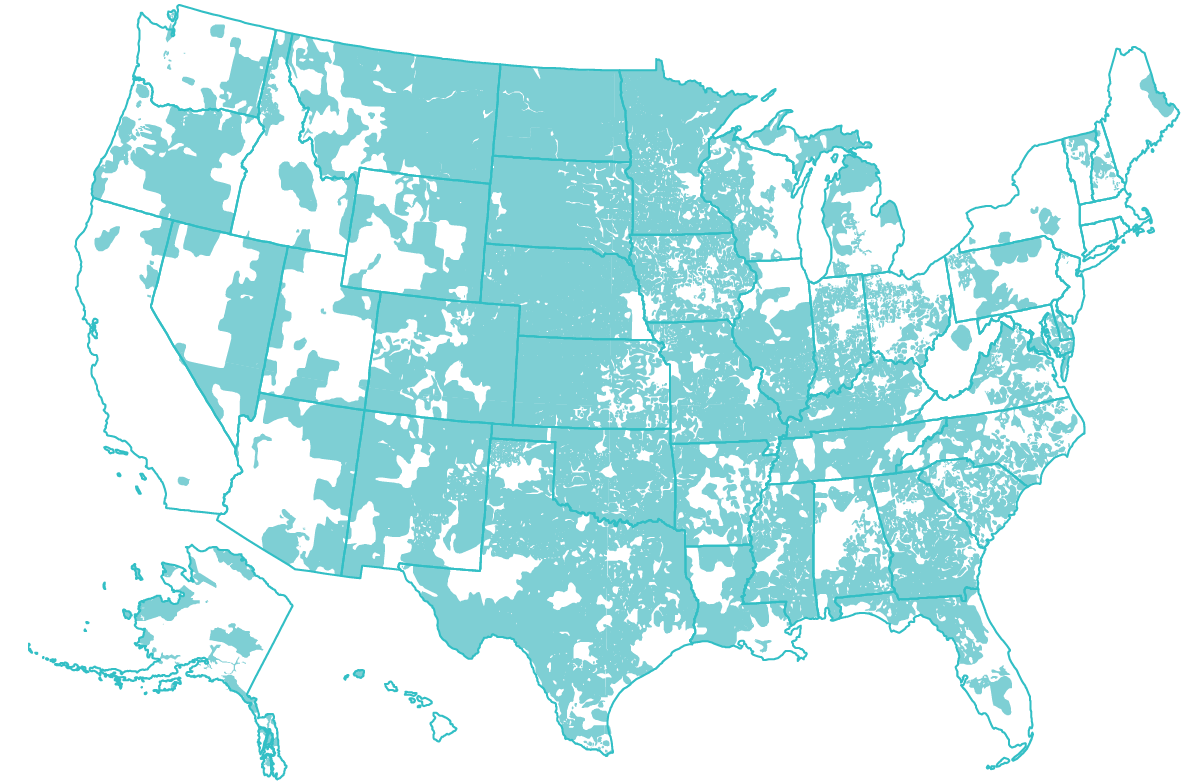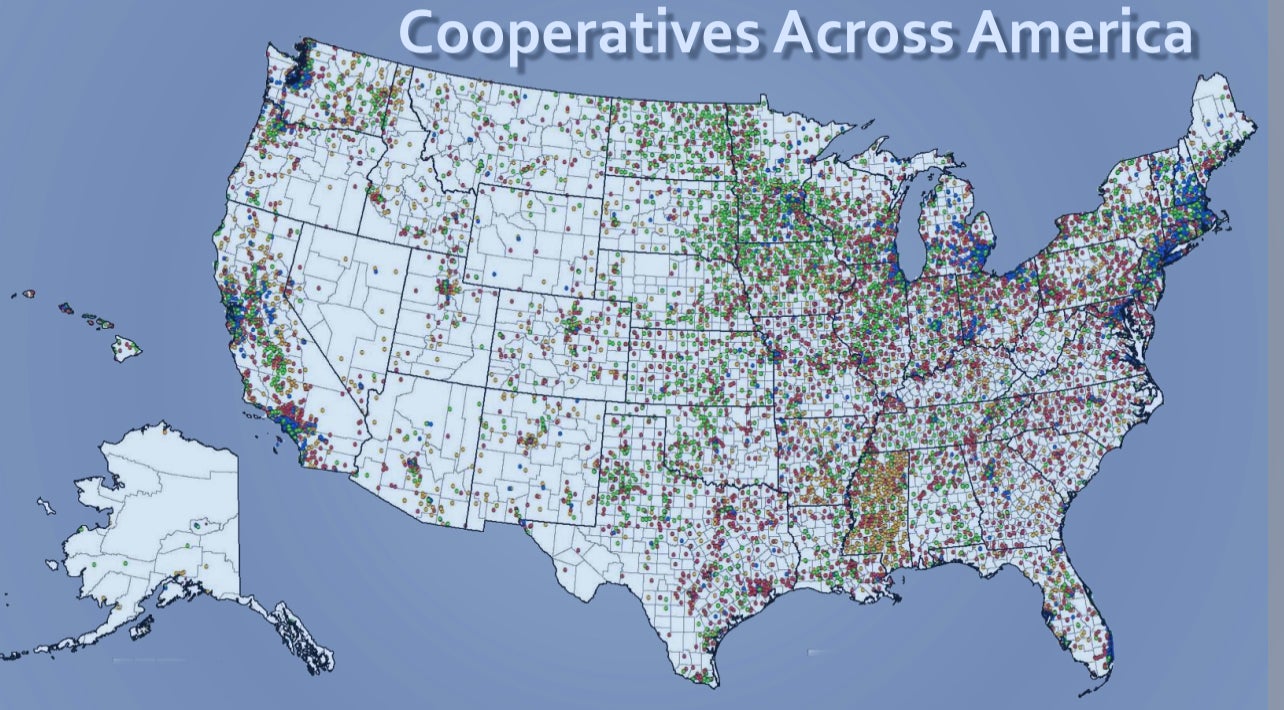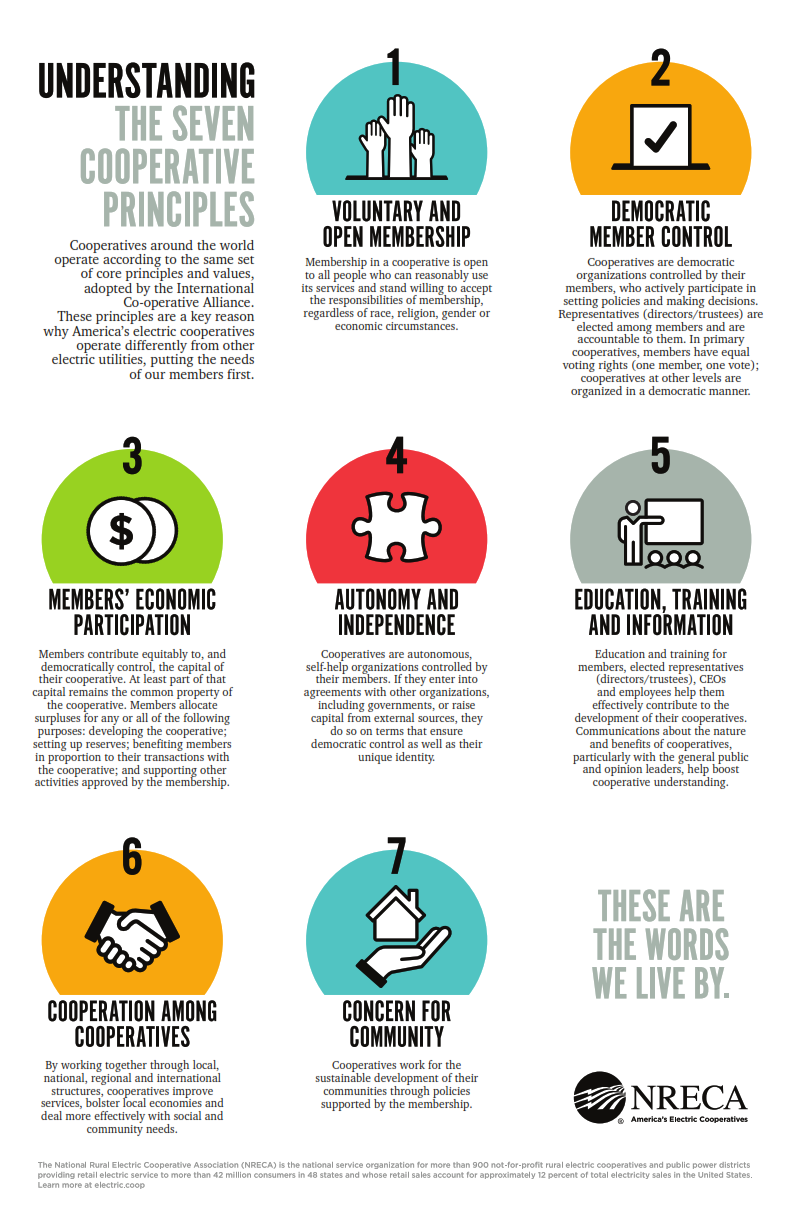Co-ops power 56% of the nation’s landmass and serve 42 million people, including 92% of persistent poverty counties in 48 states.
YOU’RE PART OF THE CO-OP MOVEMENT
by Allison Young
Did you know that as a member of KIUC, you are part of the cooperative movement happening in Hawaii, across the United States and around the world?
KIUC was formed as a co-op in 2002. It is now one of almost 900 electric co-ops and one of 40,000 co-ops in the United States.
Starting with a co-op business model means serving the community. Over time, this model propelled KIUC to become a utility that provides the cleanest, most reliable and lowest-priced electricity in Hawaii.
In addition to these accomplishments, KIUC can be depended upon to give back to its members through participation at local events, youth programs, sponsorships and charitable donations.
KIUC frequently convenes with other electric co-ops at National Rural Electric Cooperative Association events to stay up-to-date on new technology, issues affecting utilities and skills needed for employees. NRECA represents 895 distribution, generation and transmission co-ops from around the country.
“The cooperative business model is the best business model on earth,” says Adam Schwartz, founder of The Cooperative Way and a frequent speaker at NRECA events. “There’s a co-op for everything you can imagine.”
There are many examples of different types of cooperatives:
-
Consumer co-ops are owned by the members who use the co-op to buy the goods or services that they need. KIUC is a member-owned cooperative.
-
Worker co-ops are owned by their employees to provide themselves with employment and full control of their work environment.
-
Financial/credit unions provide a full range of financial and insurance services. They often offer lower interest car loans and mortgage rates than traditional banks.
-
Producer co-ops are owned by people who produce similar types of goods or services to negotiate prices more effectively and to access larger markets, such as farmers.
-
Purchasing/shared services co-ops combine member demand to achieve better pricing, availability, and delivery of products or services.
-
Housing co-ops are owned by people who wish to provide and jointly own their housing.
-
Mutual/insurance co-ops are owned by policy holders.
For more information about the cooperative movement, or if you are interested in starting a co-op business, visit ica.coop or start.coop.



